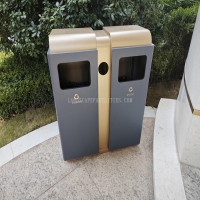Welcome to the website for landscape facilities products and knowledge.
How does the trash can’s design accommodate different waste compaction system interfaces?
Modern trash cans are no longer just simple containers; they have evolved to accommodate advanced waste compaction systems, enhancing efficiency and sustainability. The design of these bins plays a crucial role in ensuring compatibility with various compaction interfaces.
Firstly, modular designs allow trash cans to integrate seamlessly with different compaction mechanisms. Whether it’s a manual, semi-automatic, or fully automated system, the bin’s structure is engineered to fit snugly with the compactor’s interface. This adaptability is achieved through standardized mounting points and adjustable brackets, ensuring universal compatibility.
Secondly, smart trash cans feature sensor-based interfaces that communicate with compaction systems. These bins detect waste levels and trigger compaction cycles automatically, optimizing space and reducing overflow. The design includes reinforced walls and durable materials to withstand the pressure exerted by compactors.
Lastly, eco-friendly designs prioritize easy maintenance and cleaning. Removable liners and smooth surfaces prevent waste buildup, while ergonomic handles and lids ensure user-friendly operation. By harmonizing form and function, modern trash cans revolutionize waste management in homes and public spaces alike.
In conclusion, the innovative design of trash cans ensures they adapt effortlessly to diverse waste compaction systems, promoting cleaner and more efficient waste disposal.
Related search:

Recommendation
Double-bucket garbage bin, outdoor, metal, multi-color, powder-coated, double-bucket trash can